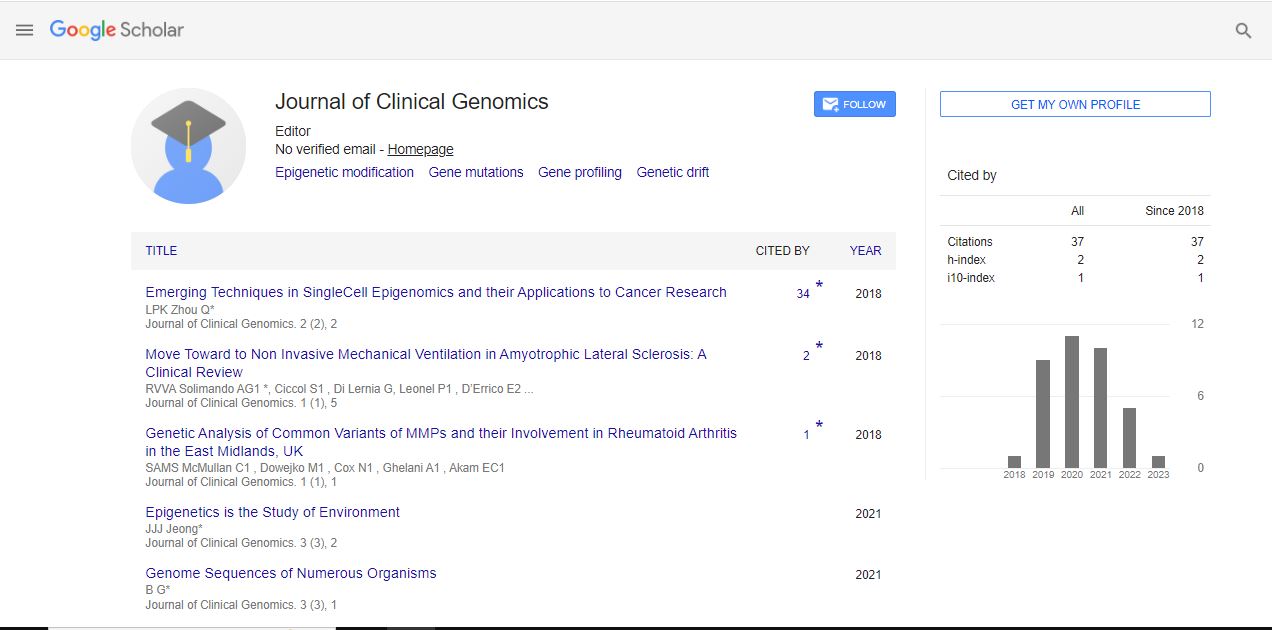Commentary, J Chromatography Res Vol: 6 Issue: 2
Classification of Chromatography and its Applications
Chensue Stephen*
1Department of Chemical, University of Messina, Messina, Italy
*Corresponding Author: Chensue Stephen,
Department of Chemical, University
of Messina, Messina, Italy
E-mail: stephen.c@gmail.com
Received date: 02 June, 2023, Manuscript No. JCGR-23-108877;
Editor assigned date: 05 June, 2023, PreQC No. JCGR-23-108877 (PQ);
Reviewed date: 19 June, 2023, QC No. JCGR-23-108877;
Revised date: 26 June, 2023, Manuscript No. JCGR-23-108877 (R);
Published date: 06 July, 2023, DOI: 10.4172/JCGR.1000060.
Citation: Stephen C (2023) Classification of Chromatography and its Applications . J Chromatography Res 6:2.
Description
Chromatography is a versatile and fundamental analytical technique used to separate and analyze complex mixtures into their individual components. It has revolutionized various scientific fields, including chemistry, biochemistry, pharmaceuticals, environmental analysis, and forensics. The principle of chromatography is based on the differential interactions of compounds within a sample with two phases: The stationary phase and the mobile phase.
Principles of chromatography
The principle of chromatography is founded on the dynamic equilibrium established between the components of a combination, the stationary phase, and the mobile phase. The process involves the following main steps:
Sample application: A sample containing multiple components it is introduced into the chromatographic system. The sample can be in liquid, gas, or solid form, depending on the type of chromatography employed.
Stationary phase: The stationary phase is a solid or a liquid phase that remains immobile during the chromatographic process. It serves as the platform for interactions with the sample components. The method of stationary phase depends on the analytes' properties and the specific separation requirements.
Mobile phase: The mobile phase is a liquid or gas that flows over or through the stationary phase, transporting the sample elements. The mobile phase's composition and flow rate are essential in achieving optimal separation.
Separation mechanism: As the mobile phase moves through the stationary phase, the sample components participating in various interactions. Some compounds may interact more strongly with the stationary phase, leading to slower migration, while others may interact less effective and with greater efficiency.
Detection: As the sample components exit in the phase of inactivity, they are detected and quantified by various detectors, such as UV-visible detectors, mass spectrometers, refractive index detectors, or flame ionization detectors, depending on the type of chromatography used.
Types of chromatography
They are different types of chromatography the following are the main steps:
Liquid chromatography: Liquid Chromatography (LC) involves the separation of components based on their differential interactions between a liquid mobile phase and a stationary phase. LC is further classified into various techniques, such as High-Performance Liquid Chromatography (HPLC), ion-exchange chromatography, Size- Exclusion Chromatography (SEC), and reversed-phase chromatography.
Gas chromatograph: Gas Chromatography (GC) separates compounds based on their differential interactions between a gaseous mobile phase and a stationary phase. GC is particularly effective for analyzing thermally and volatile stable compounds.
Thin-layer chromatography: Thin-Layer Chromatography (TLC) employs a thin layer of an adsorption substance, such as silica gel or alumina, as the stationary phase. The sample is observed on the TLC plate, and capillary action draws the mobile phase (liquid) up the plate, resulting in separation.
Affinity chromatography: It utilizes specific interactions between a target molecule and an immobilized ligand on the stationary phase to achieve selective separation.
Chiral chromatography: Chiral chromatography separates enantiomers, which are mirror-image isomers, using chiral stationary phases.
Applications of chromatography
Analytical chemistry: Chromatography plays an essential role in analytical chemistry, enabling the separation, identification, and quantification of analytes in complex mixtures.
Pharmaceuticals: In the pharmaceutical industry, chromatography is used for drug development, quality control, and analyzing the purity of Active Pharmaceutical Ingredients (APIs).
Environmental analysis: Chromatography is employed to monitor and assess environmental pollutants, such as pesticides, heavy metals, and organic compounds in air, water, and soil samples.
Proteomics and genomics: Chromatography is essential in proteomics and genomics research for the analysis of proteins, peptides, nucleic acids, and other biomolecules.
Forensic science: It is used in forensic laboratories to analyze evidence such as drugs, toxins, and unknown substances, helping in criminal investigations.
 Spanish
Spanish  Chinese
Chinese  Russian
Russian  German
German  French
French  Japanese
Japanese  Portuguese
Portuguese  Hindi
Hindi 